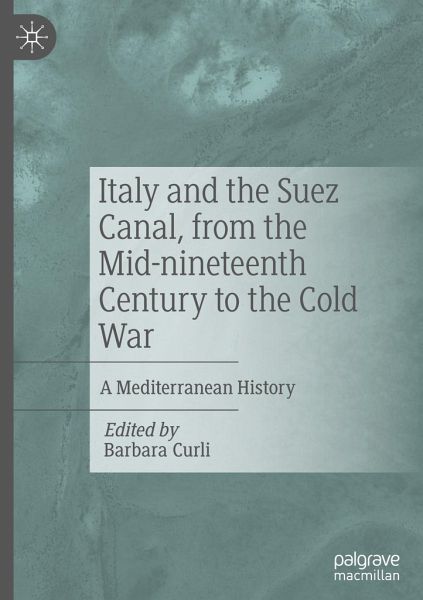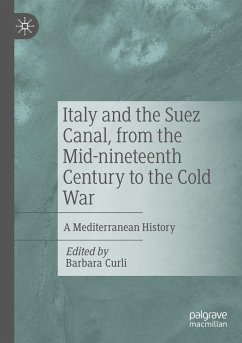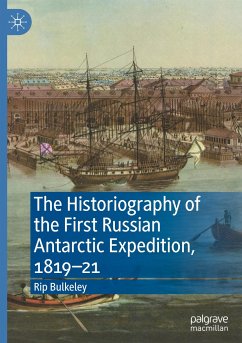
Italy and the Suez Canal, from the Mid-nineteenth Century to the Cold War
A Mediterranean History
Herausgegeben: Curli, Barbara

PAYBACK Punkte
61 °P sammeln!
Conceived in the 1850s and opened to navigation in 1869, the Suez Canal's construction coincided with Italy's path to unification and its first foray into nineteenth-century globalization. Since then, the history of Italy and the Canal have intertwined in many ways, throughout in peace and war. This edited collection explores the fundamental technical, diplomatic and financial contributions that Italy made to the production of the Canal and to its subsequent development, from the mid-nineteenth century to the Cold War. Drawing from unpublished public and private archival sources, this book is ...
Conceived in the 1850s and opened to navigation in 1869, the Suez Canal's construction coincided with Italy's path to unification and its first foray into nineteenth-century globalization. Since then, the history of Italy and the Canal have intertwined in many ways, throughout in peace and war. This edited collection explores the fundamental technical, diplomatic and financial contributions that Italy made to the production of the Canal and to its subsequent development, from the mid-nineteenth century to the Cold War. Drawing from unpublished public and private archival sources, this book is the first comprehensive account of this long and multifaceted relationship, providing innovative perspectives on Italy's diplomatic, economic, social, colonial and cultural history. An insightful read for those studying maritime, diplomatic or Italian history, this book contributes to a growing body of researchon the Canal, which has largely emerged from international business, labour and social history, and offers new insights into the Euro-Mediterranean region.














